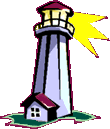|
|
|




|
Trumpets
|
|
Jewish Calendar |
Tishri 1-2 (new moon) |
|
Gregorian Calendar |
September/October |
|
Spring or Fall |
Fall Feast |
|
Scripture |
Leviticus 23:24-25 |
|
Significance |
Trumpets depicts the Rapture of the Church and the judgment of the wicked. |
The Feast of Trumpets is the first of the fall feasts. The Jewish people call
this feast Rosh Hashanah, which literally means "Head of the Year," and it is observed
as the start of the civil year (in contrast with the religious year which starts
with Passover) on the Jewish calendar.
The Feast of Trumpets is so important in Jewish thinking that it stands alongside
Yom Kippur ("Day of Atonement") to comprise what Judaism calls "the high holy days"
on the Jewish religious calendar.
It begins the "ten days of awe" before the Day of Atonement. According to Leviticus 23:24-27, the
celebration consisted of a time of rest, "an offering made
by fire," and the blowing of the trumpets.
Modern Rosh Hashanah (Ezekiel 40:1) is traced back to the Feast of Trumpets which
is the sounding of the trumpets on the first day of the seventh month (Tishri) of the
religious calendar year (Leviticus 23:24; Numbers 29:1). The trumpet referred to here
was the shofar, a ram's horn.
It was distinctive from the silver trumpets blown on the other new moons. Silver trumpets
were sounded at the daily burnt offering and at the beginning of each new month (Numbers 10:10), but
the shofar specifically was blown on the beginning of the month Tishri.
The interval of time between the last of the spring feasts (Pentecost or Weeks) and the
first of the fall feasts (Trumpets) corresponds to the present Church Age. In other words,
we are presently living between Israel's fourth and fifth feasts. The outpouring of
the Holy Spirit at Pentecost started the Church Age; and Trumpets, which will signal
Christ's second coming to rapture the Church and judge the wicked, will end the
Church Age.
The Feast of Trumpets occurs on the first day of the Hebrew month, Tishri. It would
occur at the new moon. Only the slightest crescent would be visible. However, clouds could
obscure the moon, and witnesses were required. Watchfulness was a critical ingredient
of this feast. The rabbis later added a second day to this feast to make sure they
didn't miss it. This need for watchfulness and preparedness in connection with the Feast
of Trumpets is echoed and reechoed throughout the New Testament in connection with the
Lord's coming:
"Watch, therefore; for ye know not what hour your Lord doth come." (Matthew 24:42).
"Therefore, let us not sleep, as do others, but let us watch and be sober-minded."
I Thessalonians 5:6
"Looking for that blessed hope, and the glorious appearing of the great God and our
Savior, Jesus Christ" (II Timothy 2:13).
"So Christ was once offered to bear the sins of many; and unto them that look for him
shall he appear the second time without sin unto salvation"" (Hebrews 9:28).
"Looking for and hasting unto the coming of the day of God, in which the heavens, being
on fire, shall be dissolved, and the elements shall melt with fervent heat? Nevertheless,
we, according to his promise, look for new heavens and a new earth, in which dwelleth
righeousness. Wherefore, beloved, seeing that ye look for such things, be diligent that
ye may be found of him in peace, without spot, and blameless" (II Peter 3:11-14).
For a more detailed explanation, please see the Rapture of the Church teaching.
|
|



 Back to the "Christ-Centered Mall" Back to the "Christ-Centered Mall"

This teaching was written by David Holt Boshart, Jr.
All scans done by Christ-Centered Mall, Inc. are prohibited from being copied.
All applicable copyright© laws apply and are reserved by Christ-Centered Mall.
Web pages copyright© 1998-2006. |
|

 Back to the "Christ-Centered Mall"
Back to the "Christ-Centered Mall"